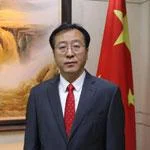The finance minister has made a welcome policy statement to check the creeping rupee depreciation and eventually jack up the exchange rate. However, that seems like a target too far right now. Global financial markets have already painfully adjusted to moves that caused the greenback to appreciate. Most economies have subsequently experienced currency depreciation.
Rupee has been under a constant pressure in the last two decades owing to relatively higher domestic inflation and persistent current account deficit (CAD). It has experienced rapid depreciation in the recent past. As a corrective policy response, the State Bank of Pakistan (SBP) hiked the policy rate, but it had little impact on the market trend. Political uncertainty has also directly fuelled speculation and manipulation. The task of setting the fundamentals right is gigantic, especially owing to the recent floods.
Policy rate, inflation and exchange rate are intertwined, and this linkage is determined through simultaneous equilibrium in three inter-related and interdependent markets: stocks, commodity and forex.
In a free market economy, this vicious or virtuous circle cannot be arbitrarily punctured in one go. Intervention in one market without causing a disruption in the other two is tricky. A change in any of the three variables makes the other two adjust to a new corresponding equilibrium level.
Without going into the background details of how these have behaved in the past, we know with absolute clarity that all the three have reached a record high level. Market forces, free or manipulated, have continued to fuel inflation and rupee depreciation, and the SBP responded by increasing the policy rate.
They have adjusted to each other in tandem. In the external sector, price parity based on increased domestic inflation and exchange rate is established and on its basis export and import orders are finalised. Foreign investment has factored in the prevailing interest rate and forex rate. There is no denying the benefits of stable exchange rate, but our key problem is a persistent and rather huge trade deficit. How would the exporter react to the intended rupee appreciation? Intuitively one can say, not favourably. The vicious cycle of the trio has to be punctured at an appropriate point.
Alternative options are there, but each has a trade-off with implications. Most economic fundamentals are in a precarious condition for a long time, principally attributed to continued decline in total factor productivity. The optimal option could come through enhancement in productivity.
This will enhance growth and subdue inflation, and consequently the rupee will become stronger. The solution to the challenge lies in supply side economics. But this takes us further to consequential challenges, like how far the World Trade Organisation (WTO) regime permits the supply side measures, and to what extent they go well with the International Monetary Fund (IMF) programme. Given the current precarious situation, the global community may recommend short-term relaxation in Pakistan’s commitments to international financial agencies.
At the same time, it is also not in the interest of the country to rely permanently on market distortionary crutches, such as subsidies and other interventions.
Let us learn from the past mistakes. The global community has demonstrated a welcome collective wisdom with positive attitude towards Pakistan recently. If this evolves into adequate external assistance, this could boost growth and the trio’s trap could easily be broken. It would lessen government’s budgetary burden and increase the prospects of bringing the policy rate down.
DR MUSHTAQ AHMAD
ISLAMABAD






















